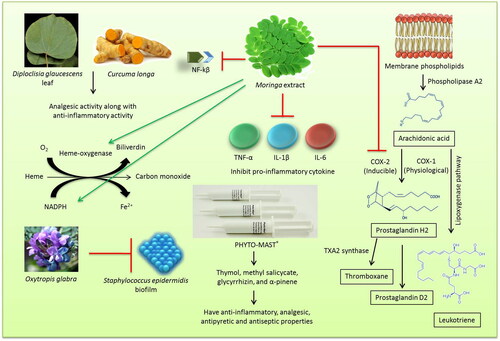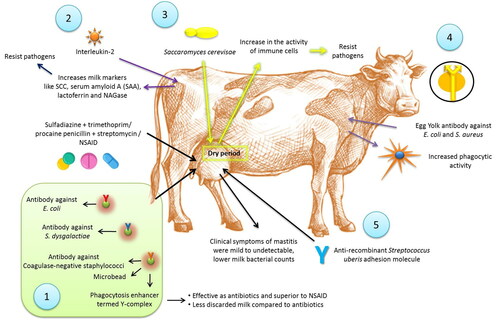Figures & data
Figure 1. Herbal therapy for treatment of mastitis. Different medicinal herbs possess anti-inflammatory and analgesic properties.

Figure 2. Use of immunotherapy for treatment of mastitis. 1. Microbeads carrying specific antibodies to the mastitis causing bacteria and an enhancer of phagocytosis, termed Y-complex was showing effects similar to sulfadiazine + trimethoprim or procaine penicillin + streptomycin or NSAIDs. 2. Interleukin-2 injection was showing increase of several milk markers related to white blood cell and epithelial cell functions including SCC, serum amyloid A (SAA), lactoferrin and NAGase. 3. Infusion of extract of Saccharomyces cerevisae yeast into mammary gland during the dry period caused an increase in the activity of immune cells in the gland, which could respond immediately to a new infection. 4. Specific IgY can be produced against Escherichia coli and Staphylococcus aureus increased phagocytic activity. 5. Use of anti-recombinant Streptococcus uberis adhesion molecule showed reduced clinical symptoms of mastitis, lower milk bacterial counts and lower infected quarters.

